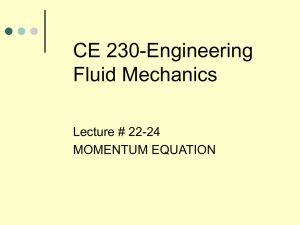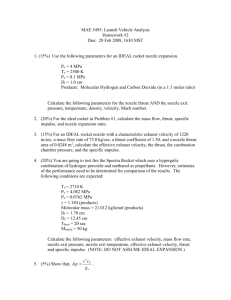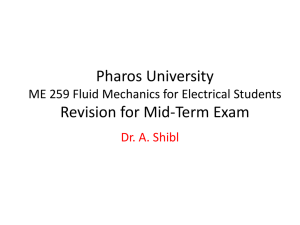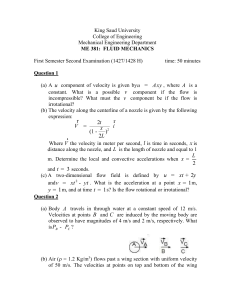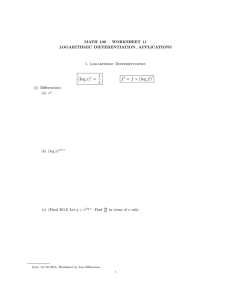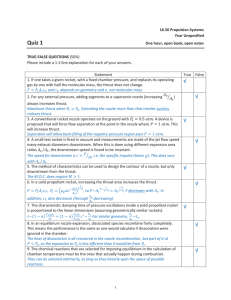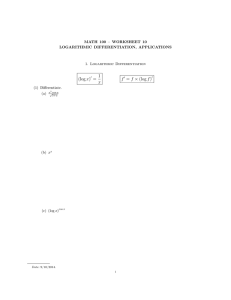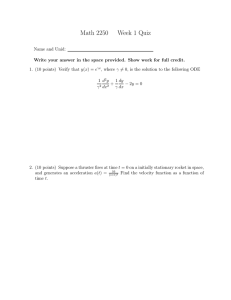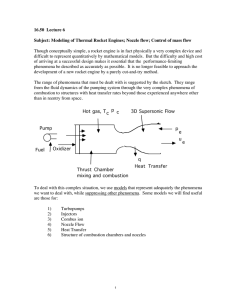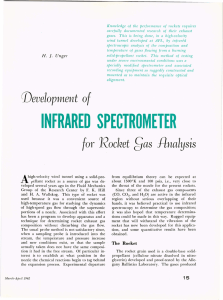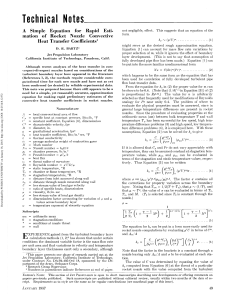ES2A7 - Fluid Mechanics Example Classes Example Questions (Set IV) Question 1
advertisement
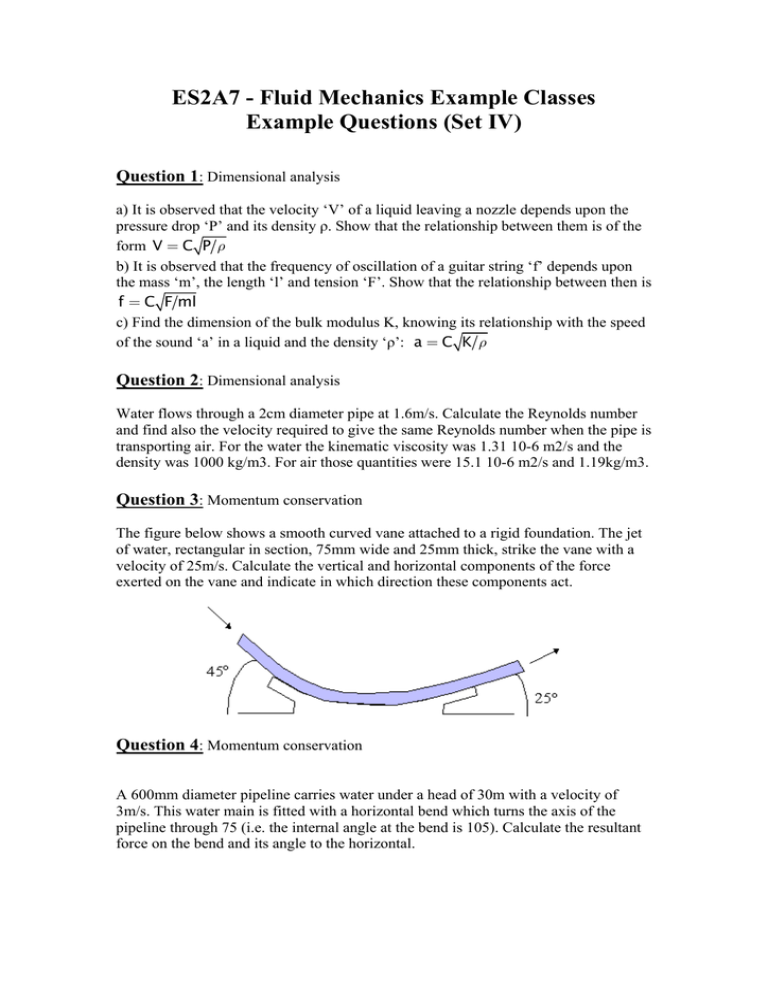
ES2A7 - Fluid Mechanics Example Classes Example Questions (Set IV) Question 1: Dimensional analysis a) It is observed that the velocity ‘V’ of a liquid leaving a nozzle depends upon the pressure drop ‘P’ and its density ρ. Show that the relationship between them is of the form V = C P ρ b) It is observed that the frequency of oscillation of a guitar string ‘f’ depends upon the mass ‘m’, the length ‘l’ and tension ‘F’. Show that the relationship between then is f = C F ml c) Find the dimension of the bulk modulus K, knowing its relationship with the speed of the sound ‘a’ in a liquid and the density ‘ρ’: a = C K ρ Question 2: Dimensional analysis Water flows through a 2cm diameter pipe at 1.6m/s. Calculate the Reynolds number and find also the velocity required to give the same Reynolds number when the pipe is transporting air. For the water the kinematic viscosity was 1.31 10-6 m2/s and the density was 1000 kg/m3. For air those quantities were 15.1 10-6 m2/s and 1.19kg/m3. Question 3: Momentum conservation The figure below shows a smooth curved vane attached to a rigid foundation. The jet of water, rectangular in section, 75mm wide and 25mm thick, strike the vane with a velocity of 25m/s. Calculate the vertical and horizontal components of the force exerted on the vane and indicate in which direction these components act. Question 4: Momentum conservation A 600mm diameter pipeline carries water under a head of 30m with a velocity of 3m/s. This water main is fitted with a horizontal bend which turns the axis of the pipeline through 75 (i.e. the internal angle at the bend is 105). Calculate the resultant force on the bend and its angle to the horizontal. Question 5: Mass conservation + Bernoulli A water clock is an axisymmetric vessel with a small exit pipe in the bottom. Find the shape for which the water level falls equal heights in equal intervals of time. Question 6: Momentum conservation Because the fluid is contracted at the nozzle forces are induced in the nozzle. Anything holding the nozzle (e.g. a fireman) must be strong enough to withstand these forces. Determine these forces. The analysis takes the following procedure: 1) Draw a control volume 2) Decide on co-ordinate axis system 3) Calculate the total force 4) Calculate the pressure force 5) Calculate the body force 6) Calculate the resultant force 1 & 2 Control volume and Co-ordinate axis have been done for you and are shown in the figure below. Notice how this is a one dimensional system which greatly simplifies matters. Question 7: Momentum conservation Consider a rocket of mass mr traveling at a speed ur as measured from the ground. Exhaust gases leave the engine nozzle (area Ae) at a speed Ue relative to the nozzle of the rocket, and with a pressure that is higher than local atmospheric pressure by an amount p e. The aerodynamic drag force on the rocket is D. Derive an equation for the acceleration of the rocket.
